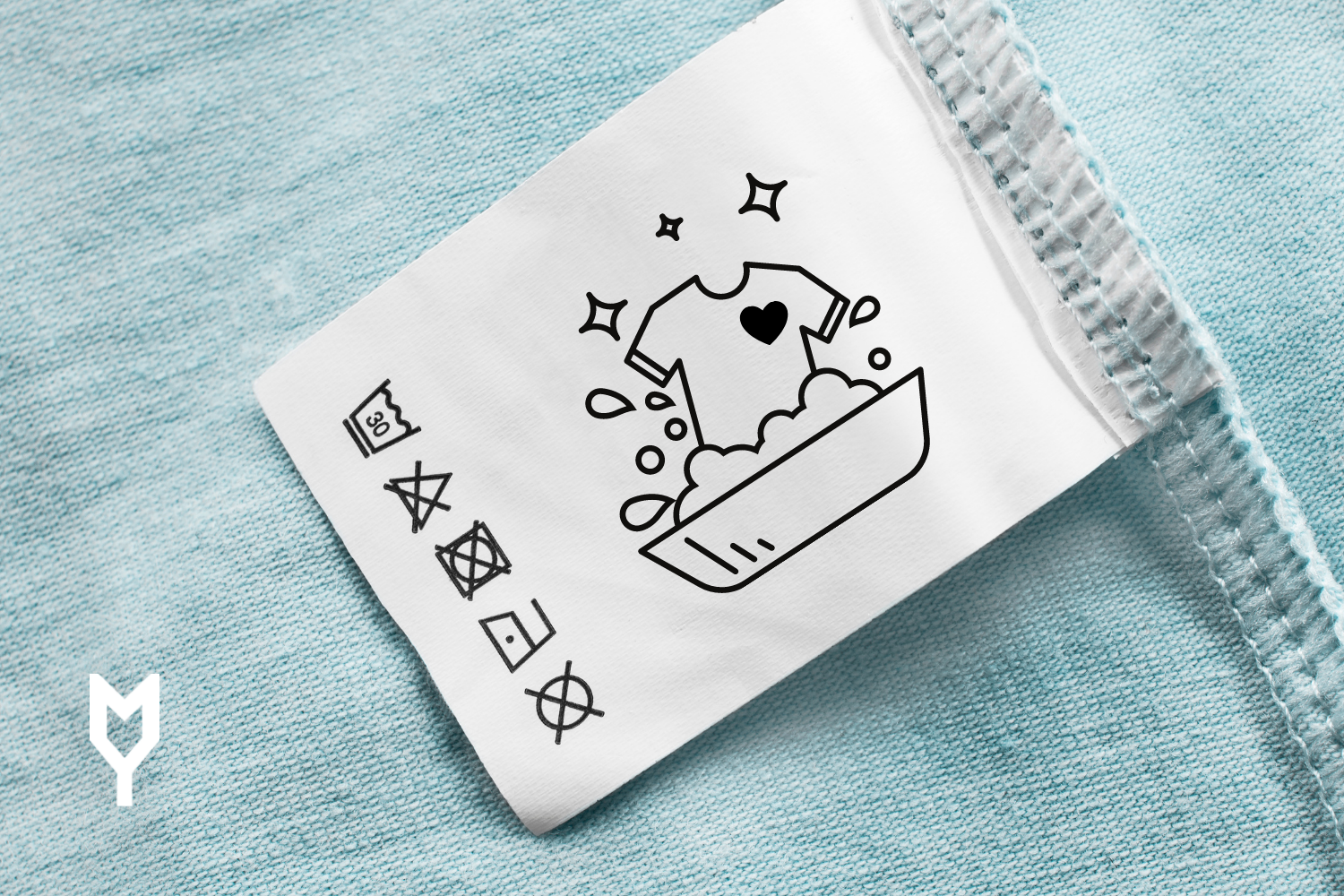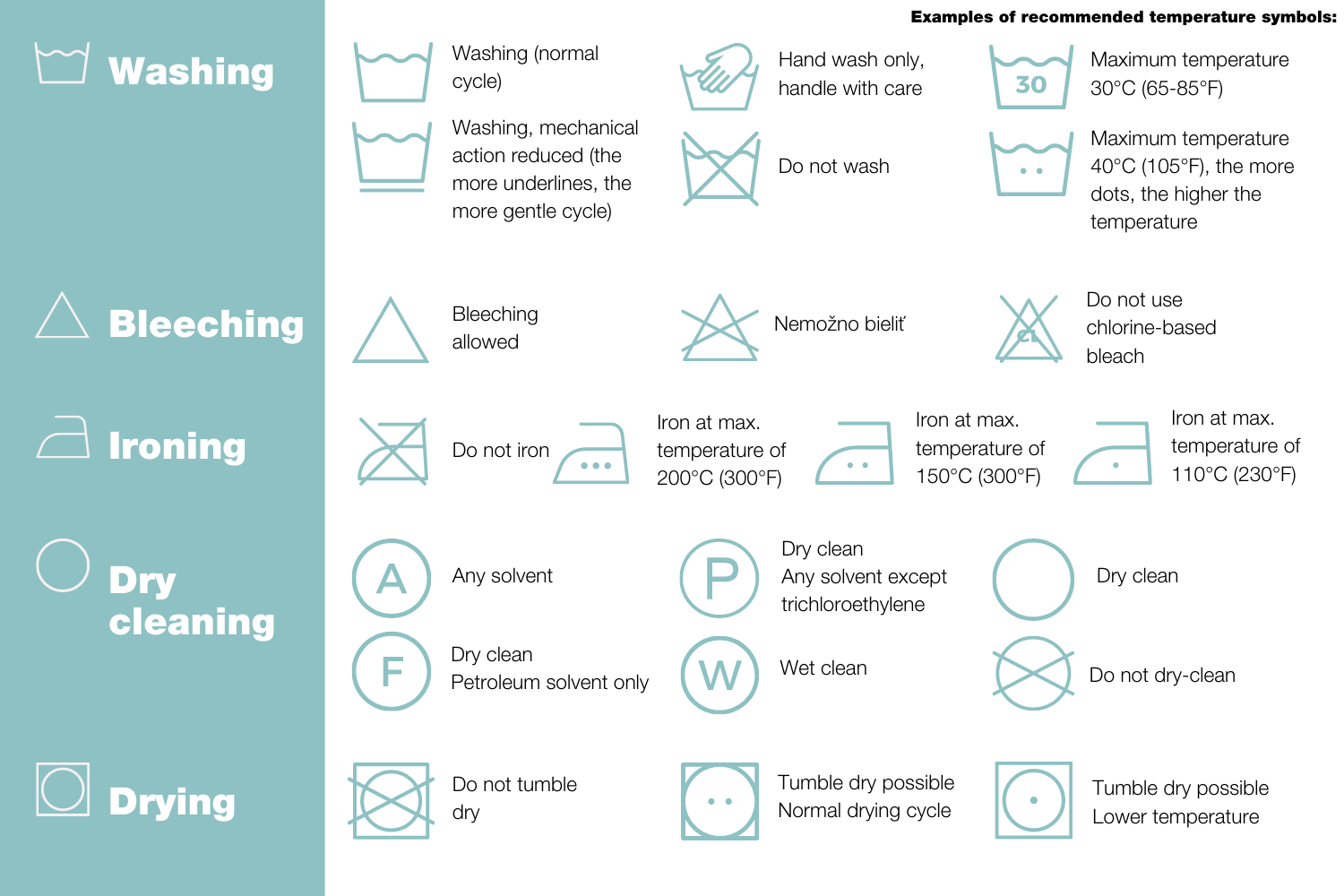How to take care of your clothes
In order for clothes with printing (or without printing) to last long, retain their qualities and for us to feel good in it, it is important to pay some attention to them. Let’s remember how to take proper care of printed textile, and also of what not to forget and what to avoid.

Taking care of textile pays off not only because its properties, such as colour, shape, size, surface quality or printing, last for a long time. Clothes are an important part of our lives, and thanks to regular care and proper treatment, we can feel good in them every day. At the same time, we can save money, because there is no need to buy new clothes too often.
As a result, taking care of our clothing can bring everyday joy not only to us, but also to relieve our planet of an unnecessarily fast cycle of shopping and disposing of clothing, the excessive production of which results in unbearable consumption and pollution of natural resources.
The basis of taking care of textile is reading and following instructions on tags.
If we cut off the tag, it often happens that sooner or later we forget all the instructions for that certain textile, and we are doomed to a difficult decision whether to take risks or keep washing on a very gentle and low temperature program forever. If you still prefer removing the tags, we recommend that you mark the instructions on hidden parts of the clothing with a textile marker.
If you order the removal of the manufacturer's tags from us, it is necessary to supplement the symbols on the textile in accordance with the law, either with a print or with your own tag. Find out more in our section on customization.
We can find a number of different washing symbols on the tags, which can also differ depending on different marking systems. Let's remember the meaning of the most frequently used symbols:

However, there are many more washing symbols, you can see a complete overview and division according to different marking systems here.
One of the important factors that determine how long the clothing will serve us as it should is the quality of the textile itself. Quality and durability depend on how the textile fibres are processed.
For example, for cotton products, it is advisable to choose ring-spun combed cotton, which is not only softer to the touch, but above all it is much stronger and lasts longer. At the same time, we recommend choosing textile that is sustainable and have been produced using more environmentally friendly methods. Due to the fact that the fibre has not been degraded by hazardous chemicals during its production, it has a much better chance of maintaining its natural properties and quality.
Take a look at our online catalogue and find quality sustainable textile. Explore organic combed cotton products from Stanley/Stella, Earth Positive, B&C and more.
 WASHING
WASHING
- Wash only when really needed - Every wash is a burden for textile in itself, so we should not overdo it. If the textile is not visibly dirty, it is not necessary to wash it after one wear, but it is sometimes enough to hang it for ventilation, for example. Air and breeze often work wonders. We recommend choosing a fabric that is sustainable and allows the fibre to breathe, thanks to which it lasts fresh much longer than with conventional textile.
- Wash clothes separately - Sort textile by colour into white, dark and coloured and distinguish further according to the needs of a particular material.
- Avoid fabric softeners - Fabric softeners change the properties and size of the fibre, so it is better not to use it at all. If you feel that you can't do without it, we recommend choosing a gentler variant and using it only for cotton and soft textile.
- Gentle detergent - Use detergents that are not too invasive to the fibres and not too harmful to the environment.
- Use different washing programs - You may find the numerous options on your washing machine useless, but they are justified. Long-term use of a range of programs is definitely worthwhile to maintain the properties of textile.
- The correct temperature and speed are the basis - The basic indicators of a suitable temperature are the washing symbols on the tags. In general, we choose lower temperature (30 °C) for textile with fine fibres, with printing, especially for materials such as Tencel or lyocell. Medium temperature (40 °C) can be handled by other ordinary clothing without printing. Higher temperatures (60 °C) are used, for example, for towels with embroidery. It is better to choose lower speed (eg. spin cycle speed of 700 rpm).
- Turn clothes upside down and close zippers - Especially for sweatshirts, shirts and trousers, we recommend closing the zippers and turning textile upside down, thus protecting colour fastness, printing and surface quality.
- Use a protective bag - For even better protection of the print, it is advisable to put the inverted textile in a protective net. We recommend using this for fine textile and printed clothing. At the same time, it is good to use it for clothes with Velcro, hooks, etc., which could damage other laundry. However, if you really want to be sure that the soft fabric is not damaged, it is best to wash it carefully in hands.
- Let the laundry dry as soon as possible - After washing, it is important to remove laundry from the washing machine in time and spread it out for drying. If we leave it in the washing machine longer, mould may start to form, and the laundry will smell unpleasantly.
- Keep the washing machine clean - Once in a while it is a good idea to run a wash cycle without clothes on a short program to get rid of dirt.
 DRYING
DRYING
- Avoid the dryer - The best tool for drying is natural air and wind. Dryers often tend to destroy the shape of the garment.
- Make sure it is laid out correctly - It is advisable to spread clothes over a larger area of the airer so that they have straightened seams and do not overlap.
- Beware of clothes pegs - If possible, do not use clothes pegs, but if you do, handle them with care to avoid unnecessary creases and wrinkles. Hangers can be a great helper for non-elastic textile.
- Make ironing easier - Before drying, we can straighten the laundry with our hands, thus saving it from ironing.
- Beware of drying in direct sunlight - Direct sunlight may cause colours to fade out.
 IRONING
IRONING
- Consider what you really need to iron and what you don't - Like washing, ironing is another burden for textile, so we recommend only ironing what is necessary.
- Choose a steam iron instead - However, some textile cannot avoid ironing, in which case we recommend using steam, which is much gentler towards clothes. The fabric should not be ironed too dry.
- Turn the fabric upside down - As with washing, it will help to iron clothes upside down. This is especially necessary in the case of printed textile!
 STORAGE
STORAGE
- Use quality hangers - Dresses, skirts and trousers are better hung on wooden hangers so that unnecessary folds are not formed. Trouser hangers with pegs with rubber underlay are ideal for trousers and skirts.
- Fold your clothes - More elastic pieces of your wardrobe, such as sweaters, could loosen up on the hangers, so it's better to fold them.
- Less is more - Only stack a few pieces in one stack of clothes so that the fabric is not overloaded and can breathe. At the same time, clothes from an unfilled stack can be removed much more easily.
- Location - Clothing should be stored away from direct sunlight, ideally in a dark closet or chest of drawers.
By taking care of your clothes, you do not support unnecessary overproduction of textile.
Thank you for being respectful towards our planet! 💚
Resources:
• Care Labels
• 8 ways to take care of your clothes and make them last longer
• How to take care of your clothes
• How to care for your clothes

